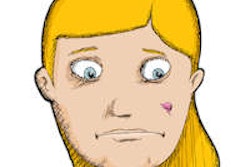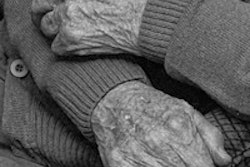
Site-specific cancer multidisciplinary team meetings (MDTs) are a prominent feature of the working lives of radiologists and oncologists alike. We attend them dutifully yet we rarely question anything about them. OK, we moan like hell when they don't run smoothly, but that is about it. I contend there are aspects of MDTs that are strikingly unusual.
The first is the love-hate feelings that MDTs engender. On the one hand, few relish them. They are tolerated at best, made passable by decent colleagues. Part of this is their reputation as a time-occupying lesion; the preparation and attendance takes most of a session. A degree of scepticism is warranted: in the U.K., the cost of running a single MDT is approximately 1,000 pounds per hour (around 1,200 euros) in wages alone.
 Dr. Paul McCoubrie is a consultant radiologist at Southmead Hospital in Bristol, U.K.
Dr. Paul McCoubrie is a consultant radiologist at Southmead Hospital in Bristol, U.K.On the other hand, by improving communication they undoubtedly improve patient care. If a loved one were to develop a malignancy, we would want it discussed at a well-run MDT, complete with a full array of experienced specialists.
Second, MDT is a misnomer. A victim of political correctness, you might argue. Rightly or wrongly, doctors of various specialties dominate the discussion. Others occasionally chip in but rarely do so despite more than a passing nod to egalitarianism. A clinical, radiological, and pathology meeting would be more accurate, but the acronym is rather unfortunate.
Third, relative contribution is changing. In meetings of yesteryear, the radiologist hinted at a vague mass on blurry images from a relative barbaric contrast study. The physicians stroked their chins, postulating a hepatorhubarboma. The surgeons hacked it out via a two-foot incision. The stage was then set for the pathologist to step up and administer the coup de grace. Case discussion was not over "until the pathologist sings."
This is becoming less true. The radiologist often makes the diagnosis without physically laying hands on the patient -- they now sing the harmony, the surgeon joins in on the chorus, and the pathologist merely hums along. Then the physicians applaud effusively at the end. Although we all smile and nod at the pathologist, it isn't clear what tune they are humming. Or if it is even a tune at all.
Last, I've observed several stereotypical but undesirable types of behavior in the MDT room. Perhaps some sound familiar:
- The Dylan Thomas: This person is an undoubted talent but also a loose cannon. As the Australian broadcaster Clive James writes, "[T]here will always be a Dylan Thomas, and he will often do great things, even while borrowing more money than he earns, breaking his bargains, drinking the pub dry, pissing in your fireplace, and wrecking every life with which he comes into close contact."
Several of these character traits are superficially enticing. Doesn't everyone dream of breaking our behavioral shackles, perhaps becoming the latest Dylan Thomas of the MDT world? However, if we all did this, oncological practice would implode in a cataclysm of antisocial behavior. Realism should prevail. I'm with Gustave Flaubert, who famously wrote that, "One should live like a bourgeois, think like a demi-god."
Dr. Paul McCoubrie is a consultant radiologist at Southmead Hospital in Bristol, U.K.
The comments and observations expressed herein do not necessarily reflect the opinions of AuntMinnieEurope.com, nor should they be construed as an endorsement or admonishment of any particular vendor, analyst, industry consultant, or consulting group.



















